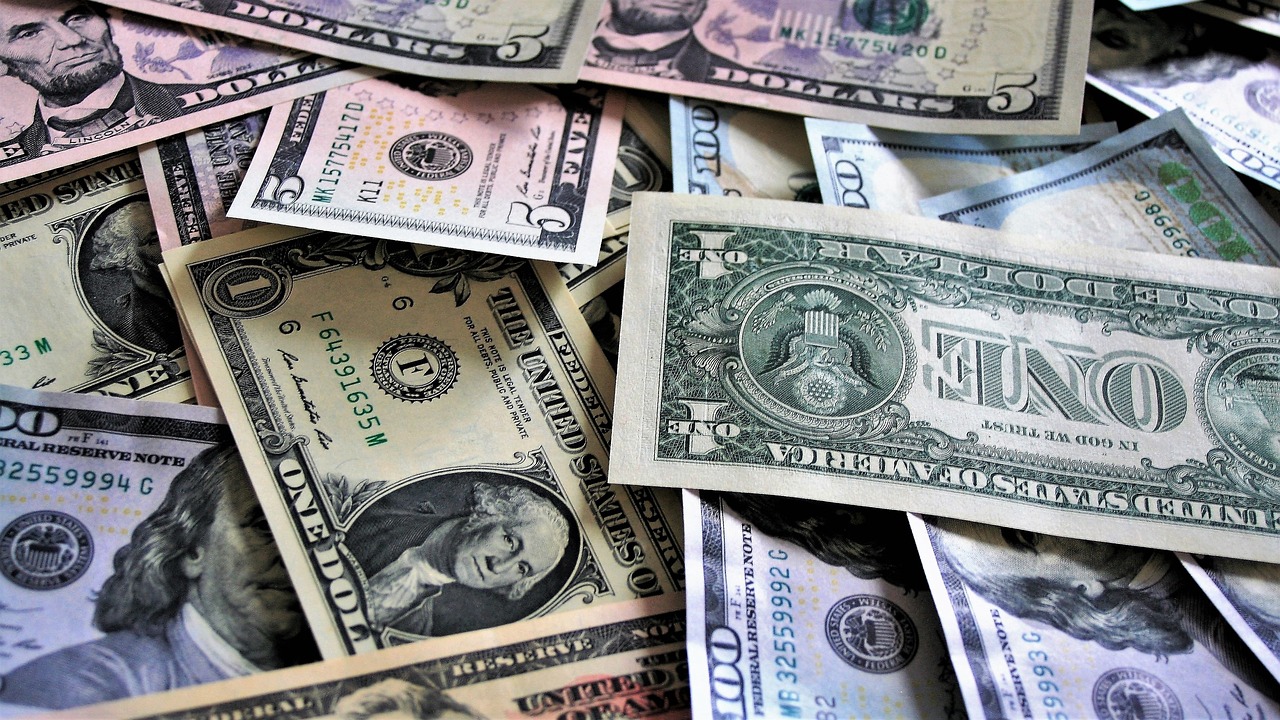Unlocking the Power of Bank Transfers: All You Need to Know about Banking in the Philippines
GPT_Global - 2024-08-29 01:30:04.0 616
Do all banks in the Philippines offer the option of bank transfers?
Remittances have become an essential part of the Philippine economy, with millions of overseas Filipino workers (OFWs) sending money back home to their families. One of the most convenient and secure ways to send money is through bank transfers. But do all banks in the Philippines offer this option? Let's find out.
Firstly, it's important to note that there are several types of banks in the Philippines - universal, commercial, thrift, and rural banks. While all these banks are regulated by the Bangko Sentral ng Pilipinas (BSP), not all of them may offer the option of bank transfers.
The good news is that most, if not all, universal and commercial banks in the Philippines offer bank transfers. These include major players such as BDO, BPI, Metrobank, and Security Bank, among others. With a large network of branches and ATMs nationwide, these banks make it easy for recipients to access the remitted money.
Thrift and rural banks, on the other hand, may have limited options for bank transfers. Some may only offer this service within their own network of branches, while some may not offer it at all. It's best to check with the specific bank first before initiating a transfer.
Lastly, there are also online and digital banks emerging in the Philippines, offering hassle-free and convenient bank transfers. These include ING, CIMB, and TONIK, among others. However, as these are relatively new players in the market, they may not have the same reach and accessibility as traditional banks.
In conclusion, while not all banks in the Philippines offer the option of bank transfers, the majority of major banks do. It's always advisable to do some research before choosing a bank for remittance services, and to also consider factors such as fees, exchange rates, and network reach. With the many options available, sending money to loved ones in the Philippines has become easier than ever.

How does the exchange rate impact bank transfers in the Philippines?
The exchange rate plays a significant role in bank transfers in the Philippines, particularly for those involved in remittance businesses. Remittance businesses, also known as money transfer services, allow individuals to send money to their loved ones or business associates in other countries. These services often rely on bank transfers to facilitate the movement of funds from one account to another. One of the main ways the exchange rate impacts bank transfers in the Philippines is through conversion fees. When sending money from one currency to another, the exchange rate determines how much of the original currency will be converted into the receiving currency. A lower exchange rate means that more of the sender's currency will be needed to convert into the recipient's currency. As a result, the sender may end up paying higher fees for the bank transfer due to the difference in exchange rates. Another way the exchange rate affects bank transfers is through the speed of transactions. Fluctuations in the exchange rate can cause delays in bank transfers, especially for large amounts of money. If the exchange rate suddenly drops, banks may hold off on converting the funds until they see a more favorable rate. This delay can significantly impact recipients who are depending on the money sent through the bank transfer. Moreover, the exchange rate can also affect the amount received by the recipient. For instance, let's say a sender from Australia wants to send money to someone in the Philippines. If the exchange rate is AUD 1 = PHP 30, and the sender sends AUD 1000, the recipient would receive PHP 30,000. But if the exchange rate changes to AUD 1 = PHP 25, the recipient would only receive PHP 25,000. This shows how the exchange rate can impact the actual amount received by the recipient. In conclusion, the exchange rate plays a crucial role in bank transfers in the Philippines, especially for remittance businesses. It can affect the conversion fees, transaction speed, and the amount received by the recipient. As such, it is essential for individuals and businesses involved in bank transfers to stay updated on the exchange rate to ensure efficient and cost-effective transactions.Can I make a bank transfer using my mobile phone in the Philippines?
In the Philippines, mobile technology has made banking and money transfer services much more accessible and convenient. With just a few taps on your phone, you can now easily make a bank transfer and send money to your loved ones or business partners without having to physically go to a bank or remittance center.
One of the easiest ways to make a bank transfer using your mobile phone in the Philippines is through online banking. Most major banks in the country now have their own mobile applications that allow users to transfer money from their accounts to other bank accounts. This service is available 24/7, making it a convenient option for those who need to transfer money urgently or outside of banking hours.
Another option is to use mobile payment apps such as GCash and PayMaya. These apps allow users to link their bank accounts and transfer funds from one account to another. They also offer additional features such as bill payments and online shopping, making it a versatile choice for those who need to do more than just transfer money.
If you are transferring money to someone who doesn't have a bank account, you can also use remittance apps like Remitly, WorldRemit, and Western Union. These apps allow you to send money directly to your recipient's mobile wallet, which they can then withdraw at a partner remittance center or through an ATM.
Aside from convenience, mobile banking and remittance services also offer competitive exchange rates and lower fees compared to traditional remittance methods. Plus, the transactions are usually processed instantly, so your recipient can receive the money right away.
To ensure the safety and security of your bank transfers, always make sure to choose trusted and reputable banking and remittance apps. Also, be wary of any suspicious emails or text messages asking for your personal and banking information.
With just a few taps on your mobile phone, you can now easily make bank transfers and send money to your loved ones in the Philippines. Take advantage of these convenient and hassle-free services for your remittance needs.
Does the recipient need to have a bank account in the Philippines to receive a bank transfer?
When it comes to sending money through a remittance business, one of the biggest concerns for both the sender and recipient is whether the recipient needs to have a bank account in order to receive a bank transfer. This is a valid concern, especially for those who may not have easy access to traditional banking services in their country. In the case of the Philippines, a popular destination for remittances, the answer is yes and no.
First, let's start with the "no" part. Many remittance providers in the Philippines offer cash pickup options, which means that the recipient does not necessarily need to have a bank account to receive the funds. Instead, they can simply go to a designated location, such as a bank or a payout center, and collect the money in cash. This option is convenient for those who may not have a bank account or prefer to receive the money in physical form.
However, having a bank account can come in handy when it comes to receiving bank transfers. The main benefit of having a bank account is the convenience and security it offers. With a bank account, the recipient can easily access the funds anytime, anywhere without having to physically go to a payout center. It also eliminates the risk of losing or misplacing the cash while on the way to pick it up.
Moreover, having a bank account opens up more options for the recipient. They can choose to receive the funds in their local currency or in a foreign currency if their bank offers foreign currency accounts. This can be useful for those who may need to convert the funds for different purposes, such as paying for international transactions.
In addition, having a bank account can also save the recipient money in terms of fees. Some banks in the Philippines offer low or even zero fees for incoming bank transfers, making it a cost-effective option for the sender and recipient.
In conclusion, while it is not mandatory for the recipient to have a bank account in the Philippines to receive a bank transfer, having one offers convenience, security, and potential cost savings. However, for those who do not have a bank account, they can still easily receive remittances through cash pickup options. It ultimately depends on the individual's preferences and needs.
What are the steps involved in processing a bank transfer in the Philippines?
Remittances play a crucial role in the economy of the Philippines, with millions of overseas Filipinos sending money back home to their families and loved ones. One of the most common forms of remittance is through bank transfers. But what exactly are the steps involved in processing a bank transfer in the Philippines? Let's find out.
The first step is to have a bank account in the Philippines. This could be either a savings or checking account, and it should be in the same currency that you are sending. You can either open an account in person at a bank branch or through online banking.
Next, you need to choose a reliable and reputable remittance service provider. There are several options available such as Western Union, MoneyGram, and online remittance services. Compare exchange rates, fees, and delivery time before making a decision.
Once you have selected a service provider, you will need to provide them with the recipient's details including their name, bank name, account number, and the amount you want to send. It is essential to double-check all the information to avoid any delays or issues.
After confirming the details, you can now proceed with the payment. Depending on the service provider, you can pay through credit or debit card, bank transfer, or cash. Some providers also offer the option to schedule recurring payments for convenience.
Once the payment is confirmed, the service provider will process the bank transfer. The recipient should receive the funds within 1-3 business days, depending on the bank's processing time. Some service providers also offer instant transfers for an additional fee.
After the transfer is completed, both the sender and the recipient will receive a notification via email or text message. The sender will also receive a receipt or confirmation number that can be used for tracking purposes.
That's it! These are the steps involved in processing a bank transfer in the Philippines. Keep in mind that exchange rates and fees may vary depending on the service provider, so it is always best to do your research beforehand. With the convenience and reliability of bank transfers, overseas Filipinos can easily send money back home to support their families and contribute to the country's economy.
Is it possible to track the progress of a bank transfer in the Philippines?
Sending money to loved ones in the Philippines can often come with a sense of urgency, and the last thing you want is for the funds to get lost in transit. As a remittance business that specializes in international money transfers, we understand the importance of tracking your bank transfer. But is it really possible to do so in the Philippines?
The answer is yes, it is possible to track the progress of a bank transfer in the Philippines. Most banks in the country have implemented a real-time gross settlement system, which allows for immediate processing and crediting of funds to the recipient's account. This means that once the transfer has been initiated, the recipient should receive the money within the same day or even within a matter of minutes.
However, if your transfer is taking longer than expected, there are a few ways to track its progress. One option is to contact your bank and inquire about the status of the transfer. Another option is to use online banking platforms, which often have features that allow you to track your transactions.
If you are using a remittance service, make sure to ask for a tracking number or reference number. This will enable you to track the progress of your transfer on their website or through their customer service hotline.
It is important to keep in mind that delays may occur due to various factors such as high transaction volumes, holidays, and technical issues. But rest assured that most banks and remittance services have measures in place to ensure the security and timely delivery of your funds.
In conclusion, tracking the progress of a bank transfer in the Philippines is possible and highly recommended. By keeping an eye on your transaction, you can have peace of mind knowing that your hard-earned money will reach its intended destination. So go ahead and send that much-needed remittance to your loved ones, and let us handle the rest.
Are there any ways to speed up the processing of a bank transfer in the Philippines?
Sending money through bank transfers is a popular and convenient way to transfer funds in the Philippines. However, it can sometimes take longer than expected for the recipient to receive the money. If you're wondering how to speed up the processing of a bank transfer in the Philippines, here are some tips to keep in mind.
Firstly, choose a bank that offers fast money transfer services. Some banks have partnerships with other banks or remittance companies that allow for quicker processing and delivery of funds.
Secondly, make sure to provide accurate and complete information when initiating the transfer. This includes the correct bank account details of the recipient, as well as any necessary references or codes. Any errors in the information can result in delays in the transfer.
Another way to speed up the processing of a bank transfer is to use online or mobile banking. Many banks now offer online platforms or mobile apps that allow for easy and immediate transfer of funds. This eliminates the need for physical paperwork and cuts down on processing time.
If you're sending money internationally, consider using a remittance service instead of a bank transfer. These services specialize in transferring funds quickly and efficiently, often at a lower cost than traditional banks.
In addition, if time is of the essence, look for options that offer same-day or next-day delivery of funds. While these may come at a higher fee, it could be worth it for urgent transfers.
Finally, it's important to keep track of the transaction and follow up with the recipient to ensure the funds have been received. In case of any issues, prompt communication with the bank or remittance service can help resolve the problem faster.
In conclusion, while bank transfers are a convenient way to transfer funds, there are ways to speed up the processing and delivery of the money. By choosing the right bank, providing accurate information, utilizing online or mobile banking, considering alternative remittance services, and staying on top of the transfer, you can ensure a quicker and smoother transaction.
About Panda Remit
Panda Remit is committed to providing global users with more convenient, safe, reliable, and affordable online cross-border remittance services。
International remittance services from more than 30 countries/regions around the world are now available: including Japan, Hong Kong, Europe, the United States, Australia, and other markets, and are recognized and trusted by millions of users around the world.
Visit Panda Remit Official Website or Download PandaRemit App, to learn more about remittance info.



